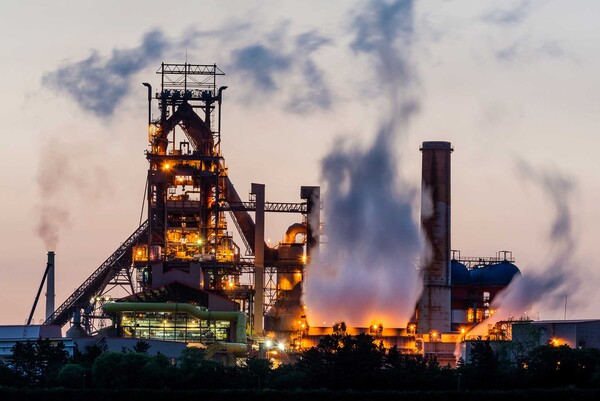New Emission Reduction Target Surpasses Industry’s Proposed 48%

The government and ruling party have decided to set the 2035 Nationally Determined Contribution (NDC) target at 53-61% compared to 2018 levels, much higher than the 48% reduction target originally proposed by the industrial sector. Critics point out that the new target is impossible to achieve without forward-thinking plans for nuclear power generation, which could dramatically drive greenhouse gas reduction.
The Democratic Party of Korea, government, and Presidential Office held the 4th high-level ruling party-government consultation meeting at the Prime Minister’s Seoul residence in Jongno-gu, Seoul on Nov. 9 and made this decision. Previously, the Ministry of Climate, Energy and Environment, the ministry in charge of NDC, had presented two options -- 50-60% and 53-60% -- through public hearings and other processes. However, during ruling party-government discussions, opinions were raised that the UN Intergovernmental Panel on Climate Change (IPCC) recommendation (61%) must be observed, leading to the conclusion of raising the upper limit by 1 percentage point. This means civil society voices were more reflected than those of the industrial sector.
The ruling party and government explained that they set the NDC considering Korea’s international status and trends of major countries worldwide. Democratic Party chief spokesperson Park Su-hyun said in a briefing, “We took into account Korea's industrial structure, which is centered on carbon-intensive manufacturing industries, the feasibility of emission reduction technologies, and global competitive conditions.”
Currently, the UK has set a greenhouse gas reduction target of 66.9%, Germany 66.2%, and Japan 54.4%. In contrast, China, the largest greenhouse gas emitter, has a reduction target of only 7-10%. The U.S., the second-largest emitter, has indefinitely postponed NDC implementation after the Donald Trump administration took office. While these two countries account for 40.3% of global greenhouse gas emissions as of last year, Korea’s share is merely 1.3%.
The problem lies in reality and feasibility. The current NDC is a 40% reduction from the 2018 levels by 2030. The new target represents at least a 13 percentage point increase from the lower limit. While greenhouse gas emissions reduced over the six years from 2018 to last year amounted to about 90 million tons, an additional 3-4 times that amount must be reduced over approximately 10 years until 2035.
Although the ruling party and government stated they “sufficiently considered realistic conditions including impacts on domestic industries,” there is still a gap with the 48% reduction target originally proposed by the industrial sector. Even achieving this would not be easy, yet a target 5 percentage points higher has been set. The upper limit of 61% must also be prepared for. While labeled as a “challenging target,” it cannot be ignored as it represents the IPCC recommendation.
The steel, petrochemical, and automotive industries are expected to face direct hits immediately. The power generation industry, which emitted 283 million tons of carbon in 2015, must reduce emissions to 88.3 million tons by 2035 (based on 53% reduction). The hydrogen-based steel production proposed by the government to reduce steel industry emissions is expected to be introduced only around 2037, meaning it cannot influence the 2035 NDC. The automotive industry is also in emergency mode. Transportation sector greenhouse gas emissions, which were 97.5 million tons last year, must be reduced to 39.3 million tons within 10 years.
The government will finalize these details through deliberation by the Carbon Neutrality and Green Growth Committee and the Cabinet meeting, then announce them at the 30th Conference of the Parties (COP30) to the UN Framework Convention on Climate Change. Subsequently, it plans to submit the final proposal to the UN Framework Convention on Climate Change (UNFCCC) next month.
Meanwhile, the ruling party and government decided to adjust the maximum tax rate for dividend income separate taxation in a direction to ease it as a stock market activation measure. The specific tax rate level will be discussed in the regular National Assembly session, with a reduction to 25% being likely. They also discussed current issues such as introducing a regional doctor system to support medically vulnerable groups in regions and institutionalizing non-face-to-face medical treatment.


